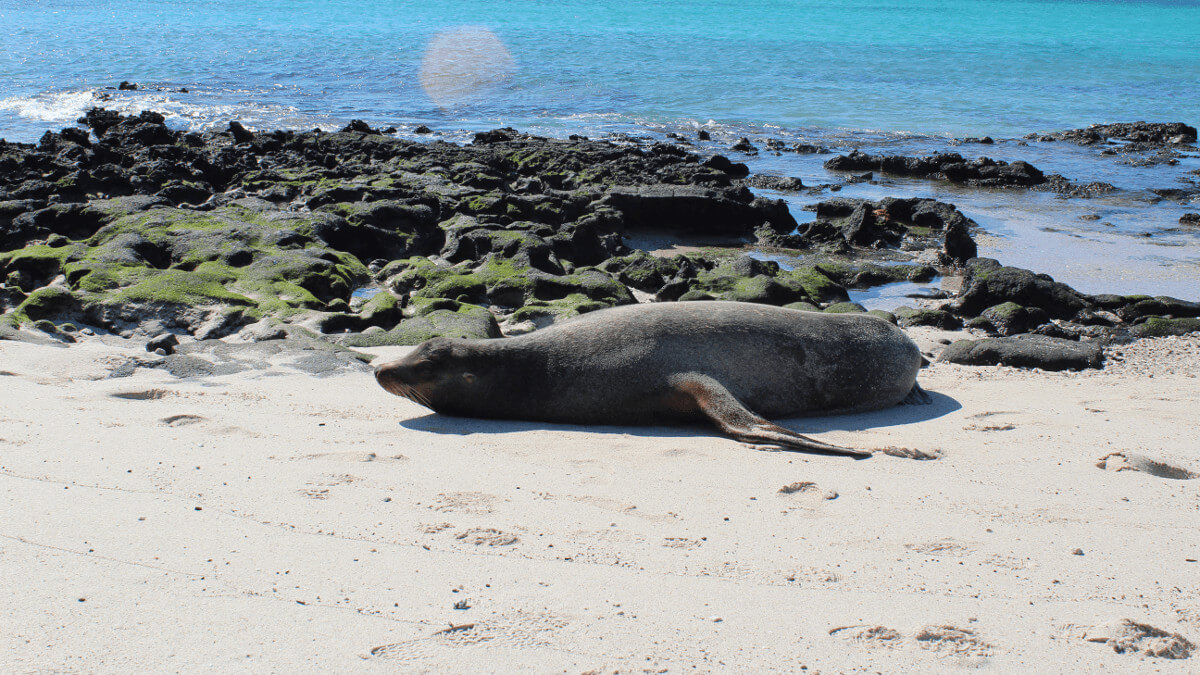

This species endemic to the Galapagos is the only reptile on Earth that lives and feeds in the ocean. Able to dive up to 30 feet underwater, it has a flat tail that allows them to swim very well; which is why they can be found on virtually every island of the archipelago.
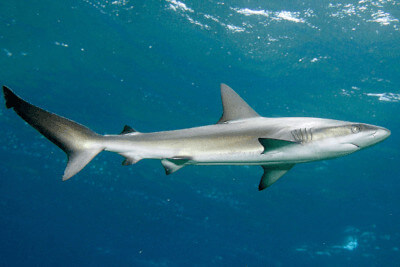
An enthusiast of the Galapagos shorelines, this species can be seen among the reefs and can grow up to 12 ft. A predator that feeds on smaller fish, the larger individuals have been known to attack sea lions, marine iguanas and even other sharks.

The only penguin that lives north of the Equator on the planet. This endemic resident was able to adapt to life outside the Antarctic because of the Humboldt and Cromwell cold water currents that hit the archipelago straight on. Though small groups can be seen throughout the Galapagos, the main colonies are on Fernandina and Isabela.
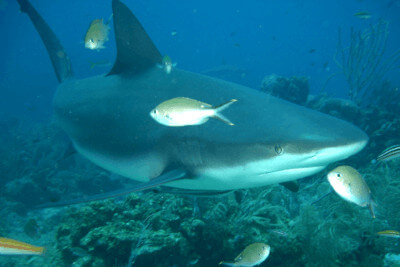
This native can also be found swimming around reefs in China, Australia, South Africa, Hawaii and Costa Rica; it is relatively small and its body is dark except for the tips of its fins, which are white.
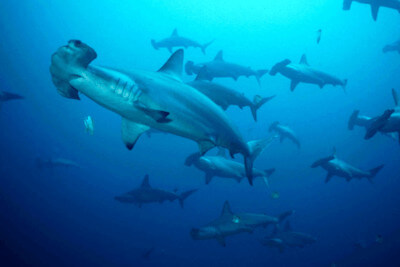
World-famous for the shape of its head, the hammerhead diet includes fish, calamari, octopuses, crustaceans, rays and other hammerheads. Commonly seen when snorkeling or diving.

The Galapagos green sea turtle is on the UICN threatened species list. Also called the black sea turtle because of its dark color, it is an endemic subspecies that lays its eggs on the Galapagos beaches.
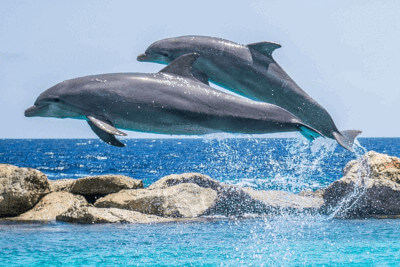
Common and bottle-nose dolphins are natives to the Galapagos. They can routinely be seen swimming and jumping out of the water next to the tour ships.
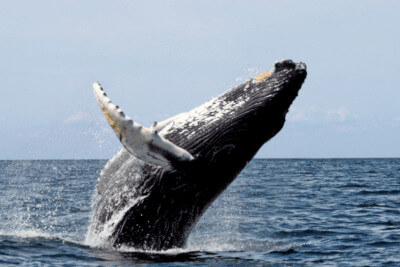
Different varieties of whales visit the Galapagos throughout the year, including orcas, humped and blue whales.
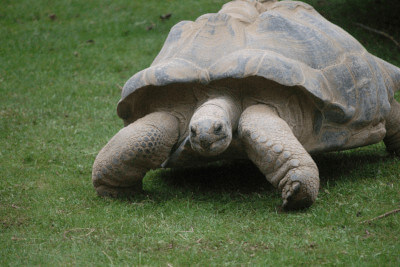
The largest tortoise on the planet, an adult can weigh up to 440 kilograms and be 6 ft. long. In the wild, these reptiles have a live spawn of 100 years; but on captivity they have been known to live up to 170 years. Like many other animals, the Galapagos tortoise adapted to unique environments and subspecies appeared on the different islands. During the early 18th century the population of giant tortoises decreased dramatically because whalers hunted them for oil.
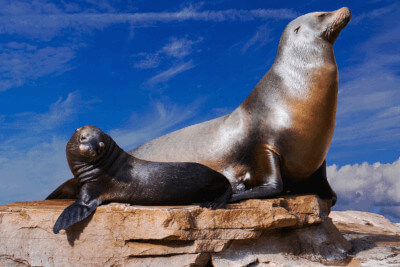
Swimming and hunting in the Pacific’s waters, the sea lions eat small fish and possess a playful- curious nature that makes swimming or snorkeling among sea lions a usual experience.
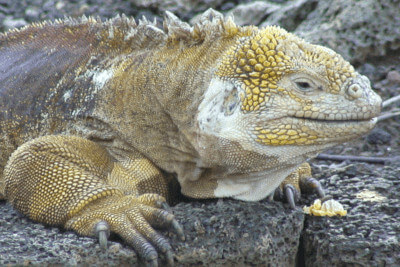
Endemic to the islands, the land iguanas vary on size and color according to the specific adaptation process each colony has undergone. Isabela is home to the largest subspecies of land iguanas, which feeds mainly on the islands giant cacti. These reptiles life 60 years approximately.
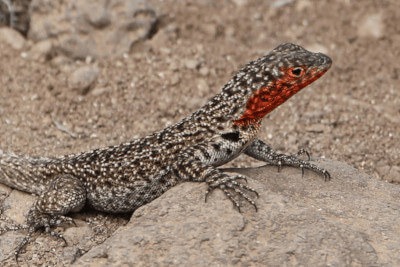
Of the 22 subspecies of lava lizards, 9 are endemic to the islands and can change colors to better suit their needs. When threatened, they do “push-ups” as a way to deter predators.
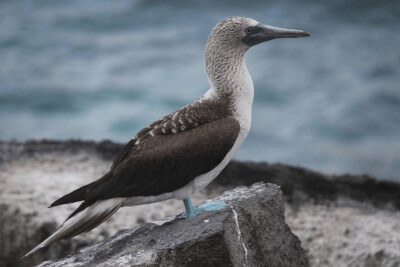
An intriguing bird that is characterized by its webbed blue feet. The name “bobbie is an adaptation from the Spanish word for “dull”, “bobo”. This species can be found in many of the Galapagos. Its feeds on small sea creatures and can be seen diving to catch its prey.
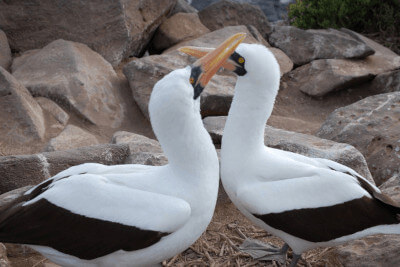
A white bird with a characteristic dark spot around the eyes that resembles a mask. The Nazca bobbie is closely related to the bobbies found in other areas of the tropical Pacific.

Identical to the blue footed bobbie, except for the color of their feet, these tropical bird are strong aviators but clumsy when landing or taking off. Biggest colony can be found on Genovesa.
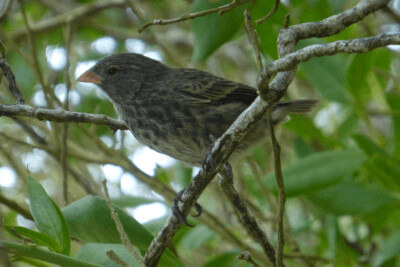
A group of 13 subspecies of passerine birds originally observed by Charles Darwin himself which have endured changes to the size and shape of their beaks to better adapt to their native islands.

There are several subspecies of mocking birds on the Galapagos, each adapted to a specific island and curious and friendly toward visitors.

The frigate and great frigate are native to the archipelago and can be found on most islands. Also known as pirate-birds, these ruthless freeloaders steal food from other birds rather than catching it themselves. Males have a distinctive red chest which they puff to attract their female counterparts.
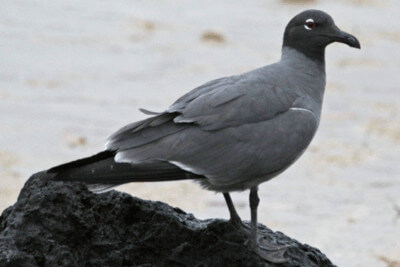
The lava gull is an endemic species of the Galapagos. Adults have grey feathers with a white belly and an orange ring around the eyes. These tiny gulls hunt for calamari among the ships navigating the islands and all 400 couples of them live solely in the archipelago.

The only albatross of the tropics, its name derives from the shape of its wings. The Galapagos albatross can also be found on continental Ecuador and Peru and it feeds on fish and calamari, and reproduces mostly on Española. Their mating ritual includes circular dancing by the male. They are brown colored, with white heads and long yellow beaks.

This brown dove is native to the islands and feeds mostly on seeds. It can be found on most islands on low dry lands among disperse trees and cacti.
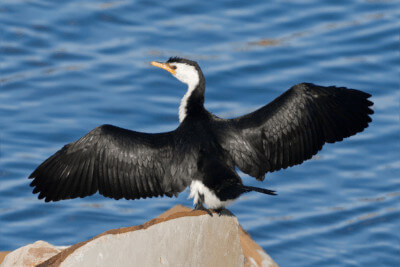
The non-flying cormorant is endemic to the Galapagos and the only cormorant in the world that cannot fly. This webbed footed bird dives underwater and hunts their prey near the bottom of the ocean floor around the islands and feeds on small fish, eels and octopi. Their feathers are not impermeable so the Galapagos cormorant spends most of the time drying under the sun. They can only be found on Fernandina.
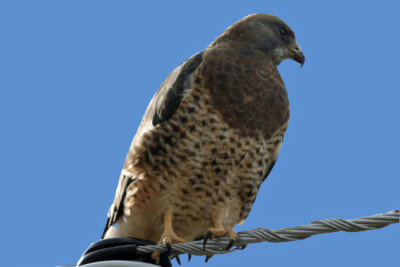
Although there are only 150 couples of this species, it is not considered under danger. Endemic to the islands, the Galapagos hawk sits on top of the food chain and feeds on insects, lizards and small land iguanas. A mid-sized brown hawk found on several islands.
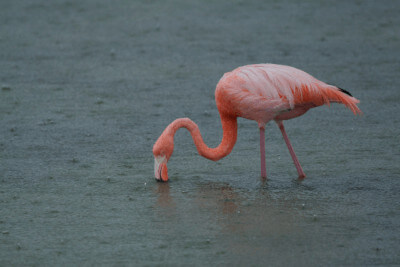
The American flamingo can be found across Central and South America. One of the brightest-colored in the world they can be found on Floreana and Isabela.